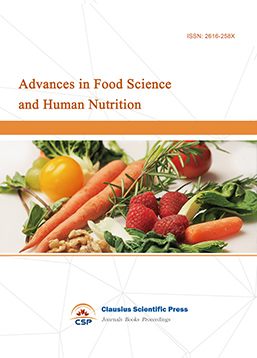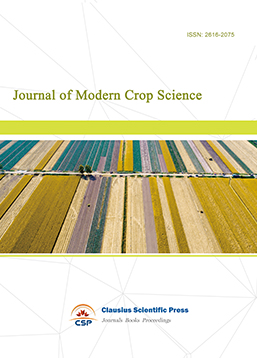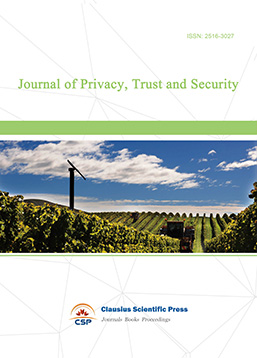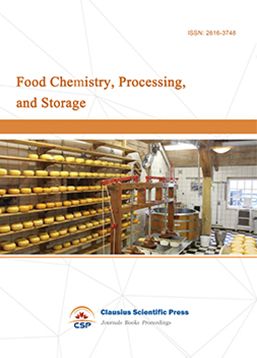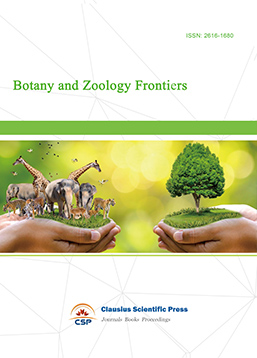DETERMINATION OF NITRATES, SULPHATES AND PHOSPHATES IN SOIL OF OGOBIRI AND ADAGBABIRI FARMLANDS IN BAYELSA STATE, NIGERIA
DOI: 10.23977/pnssi.2022.010101 | Downloads: 77 | Views: 4203
Author(s)
Orodu Victor Enearepuadoh 1, Morokowei Robert 1
Affiliation(s)
1 Department of Chemical Sciences, Faculty of Science, Niger Delta University, Wilberforce Island, P.M.B 071, Amassoma, Bayelsa State
Corresponding Author
Orodu Victor EnearepuadohABSTRACT
The natural medium in which most plants' roots develop is soil. Most farmers experience issues in the quality of goods acquired from specific farms over time owing to a lack of understanding about the necessity for soil testing or the usage of fertilizers for crop development. On the farmlands of Agbadabiri and Ogobiri Villages in Bayelsa State, Nigeria, nitrate, sulphate, and phosphate levels were measured. For three months, samples were obtained using an auger at various depths (from 10 cm to 30 cm). For the measurement of NO3-, SO42-, and PO43- in soil samples and control, a standard spectrophotometer was set at 470 nm, 420 nm, and 660 nm, respectively. The mean and standard deviation of the soil samples tested in various batches were calculated using Microsoft Excel. With a probability of 0.05 acceptance, a one-way ANOVA was utilized to assess the significant difference between the samples and the control. In the Ogobiri and Adagbabiri villages, the ranges in nitrate (3.25ppm–4.66ppm), sulphate (2.55ppm–5.25ppm), and phosphate (0.67ppm–3.98ppm) were found for both farmlands and control. The results revealed that nutrient concentrations were below standard, necessitating the application of fertilizer to boost nutrient availability.
KEYWORDS
Soil, Nutrients, Phosphate, Nitrate, SulphateCITE THIS PAPER
Orodu Victor Enearepuadoh, Morokowei Robert, DETERMINATION OF NITRATES, SULPHATES AND PHOSPHATES IN SOIL OF OGOBIRI AND ADAGBABIRI FARMLANDS IN BAYELSA STATE, NIGERIA. Plant Nutrition & Soil Science International (2022) Vol. 1: 1-18. DOI: http://dx.doi.org/10.23977/pnssi.2022.010101.
REFERENCES
[1] Arizona Master Gardener Manual (2017). Cooperative Extension, College of Agriculture, University of Arizona.
[2] Balasubramanian A., (2017). Chemical Properties of Soils. Centre for Advanced Studies in Earth Science, University of Mysore, Mysore.
[3] Blum W.E.H., Schad P. and Nortcliff S. (2018). Essentials of soil science. Stuttgart: Borntraeger Science Publishers.
[4] Bot, Alexandra; Benites, José (2005). The importance of soil organic matter: key to drought-resistant soil and sustained food and production. Rome: Food and Agriculture Organization of the United Nations. ISBN 978-92-5-105366-9.
[5] Brady, N. C. & Weil, R. R. (2008). The Nature and Properties of Soil, 14th ed. Upper Saddle River, NJ: Prentice Hall.
[6] Charles H., Quirine K., Dale D., Kristen S., Karl C., Greg A., and Larry G. (2005). Phosphorus Basics – The Phosphorus Cycle. Agronomy Fact Sheet Series. Fact Sheet 12. Nutrient Management Spear Program http://nmsp.css.cornell.edu.
[7] College of Tropical Agriculture and Human Resources (CTAHR), (2007). Soil nutrient Management for Maui County. https://www.ctahr.hawaii.edu/ mauisoil/c_nutrients.aspx
[8] Dennis F. and John S. (2003). Relay Cropping Offers Economic Benefits and Reduces Nitrate Leaching from Soil. Crop watch University of Nebraska Lincoln.
[9] Denmead, Owen Thomas; Shaw, Robert Harold (1962). "Availability of soil water to plants as affected by soil moisture content and meteorological conditions". Agronomy Journal. 54 (5): 385‒90.
[10] Dominati, Estelle; Patterson, Murray; Mackay, Alec (2010). "A framework for classifying and quantifying the natural capital and ecosystem services of soils". Ecological Economics. 69 (9): 1858‒68.
[11] Donahue R.L., Miller R.W. and Shickluna, J.C. (1977). Soils: An Introduction to Soils and Plant Growth. Prentice-Hall. ISBN 978-0-13-821918-5.
[12] Doreen Amponsah, Godfred Etsey Sebiawu, Henry Nagai (2014). Determination Of Amount Of Phosphate And Sulphate In Soil Samples From University Of Cape Coast Farm. International Journal of Scientific & Technology Research Volume 3, Issue 7, pp 211-215.
[13] Dykhuizen, Daniel E. (1998). "Santa Rosalia revisited: why are there so many species of bacteria?". Antonie van Leeuwenhoek. 73 (1): 25‒33.
[14] EPA (2012). A Citizen’s Guide to Monitored Natural Attenuation. Office of Solid Waste and Emergency Response (5102G). EPA 542-F-12-014.
[15] FAO (1985). "Soil and water". Food and Agriculture Organization of the United Nations. Retrieved 21 February 2021.
[16]Gardner, C.M.K.; Laryea, K.B. & Unger, P.W. (1999). Soil physical constraints to plant growth and crop production (1st ed.). Rome: Food and Agriculture Organization of the United Nations.
[17] Ginder-Vogel, M. & Sparks, D. L. (2010) The impact of X-ray absorption spectroscopy on understanding soil processes and reaction mechanisms. In Synchrotron-Based Techniques in Soils and Sediments, eds. Singh, B. & Gräfe, M. (Burlington: Elsevier 1-26.
[18] Haygarth P. M. & Ritz, K. (2009). The future of soils and land use in the UK: Soil systems for the provision of land-based ecosystem services. Land Use Policy 26S:S187-S197.
[19] Heather, K.-B. (2019). Plant CSI: Nutrient deficiency? The LSU AgCenter and the LSU College of Agriculture. https://www.lsuagcenter.com/profiles/rbogren/ articles/page1568388982983
[20] Heckman, J.R., Sims, J.T., Beegele, D.B., Coale, F.J., Herbert, S.J., Bruulsema, T.W and Bamka, W.J. (2003). Nutrient Removal by Corn Grain Harvest. Agronomy 95, 587-591.
Horn, Rainer; Taubner, Heidi; Wuttke, M. & Baumgartl, Thomas (1994). "Soil physical properties related to soil structure". Soil and Tillage Research. 30 (2–4): 187–216.
[21] House, Christopher H.; Bergmann, Ben A.; Stomp, Anne-Marie; Frederick, Douglas J. (1999). "Combining constructed wetlands and aquatic and soil filters for reclamation and reuse of water". Ecological Engineering. 12 (1–2): 27–38.
[22] Linn, Daniel Myron; Doran, John W. (1984). "Effect of water-filled pore space on carbon dioxide and nitrous oxide production in tilled and nontilled soils". Soil Science Society of America Journal. 48 (6): 1267–72.
[23] McCarthy, David F. (2006). Essentials of soil mechanics and foundations: basic geotechnics (http://sutlib2.sut.ac.th/sut_contents/H109094.pdf) (7th ed.). Upper Saddle River, New Jersey: Prentice Hall. ISBN 978-0-13-114560-3.
[24] McClellan, T. (2021). "Soil composition". University of Hawaii at Mānoa, College of Tropical Agriculture and Human Resources.
[25] Mesoppirr Lynda, Okongo Erick, Jackson Kiptoo, Magoma Gabriel (2015). Analysis of the Levels of Phosphates, Nitrates and Sulfates in the Wheat Growing Area of Ntulele in Narok County, Kenya. Journal of Environment and Earth Science. Vol.5, No.4, pp 116-119.
[26] Miller, Raymond W.; Donahue, Roy Luther (1990). Soils: an introduction to soils and plant growth. Upper Saddle River, New Jersey: Prentice Hall. ISBN 978-0-13-820226-2.
[27] Needelman, B. A. (2013). What Are Soils? Nature Education Knowledge 4(3):2
[28] Rajaskhekha, B.K., Sahrawat, K.L., Wani, S.P. and Pardhasardhy, G. (2010). Integrated nutrient management to enhance on farm productivity of Rain fed Maize in India. International Journal of Science 5 (4), 216-225.
[29] Raynaud, X.; Nunan, N. (2014). "Spatial ecology of bacteria at the microscale in soil". PLOS ONE. 9 (1): e87217. Bibcode: 2014PLoSO...987217R.
[30] Rebecca L-K. (1992). Plant nutrients in the soil. Wollongbar Agricultural Institute, for CaLM and NSW Agriculture, North Coast region. From the Soil Sense leaflet 8/92. Agdex 531.
[31] Samira A. Ben Mussa, Hawaa S. Elferjani, Faiza A. Haroun, Fatma F. Abdelnabi (2009). Determination of Available Nitrate, Phosphate and Sulfate in Soil Samples. International Journal of PharmTech Research. Vol.1,.3, pp 598-604.
[32] Schlesinger, William H.; Andrews, Jeffrey A. (2000). "Soil respiration and the global carbon cycle". Biogeochemistry. 48 (1): 7‒20.
[33] Singh, B. & Schulze, D. G. (2015). Soil Minerals and Plant Nutrition. Nature Education Knowledge 6(1):1.
[34] Simonson (1957). "What Soils Are". In Stefferud, Alfred, ed. Soil: The Yearbook of Agriculture 1957. United States Department of Agriculture. OCLC 704186906.
[35] Smart Fertilizer (2020). Sulphur in plant and soil – The 4th Macronutrient. https://www.smart-fertilizer.com/articles/sulfur.
[37] Soil Science Division Staff (2017). "Soil structure". Soil Survey Manual, USDA Handbook No. 18. Washington, DC: United States Department of Agriculture, Natural Researches Conservation Service, Soils.
[38] Stevenson, F. J. & Cole, M. A. (1999). Cycles of Soil: Carbon, Nitrogen, Phosphorus, Sulfur, Micronutrients, 2nd ed. New York, NY: Wiley.
[39] Su C. & Suarez D. L. Coordination of adsorbed boron: A FTIR spectroscopic study. Environmental Science and Technology 29, 302-311 (1995). doi: 10.1021/es00002a005.
[40] Tamboli, P. M. (1961). The influence of bulk density and aggregate size on soil moisture retention. Ames, Iowa: Iowa State University.
[41] Taylor, S.A. & Ashcroft, G.L. (1972). Physical edaphology: the physics of irrigated and nonirrigated soils (https://archive.org/details/ physicaledapholo0000tayl). San Francisco, California: W.H. Freeman. ISBN 978-0-7167-0818-6.
[42] The Mosaic Company (2021). Nutrient management. Soil Defined. Exploring crop nutrition. https://www.cropnutrition.com/nutrient-management/soil-defined.
[43] Torbert, H. Allen; Wood, Wes (1992). "Effect of soil compaction and water-filled pore space on soil microbial activity and N losses". Communications in Soil Science and Plant Analysis. 23 (11): 1321‒31.
[44] Torsvik, Vigdis; Øvreås, Lise (2002). "Microbial diversity and function in soil: from genes to ecosystems". Current Opinion in Microbiology. 5 (3): 240‒45.
[45] United States Department of Agriculture (USDA) (2014). Soil Nitrogen. Soil Health – Guidelines for Educators. USDA-NRCS. Pp 1-3.
[46] Valentin, Christian; d'Herbès, Jean-Marc; Poesen, Jean (1999). "Soil and water components of banded vegetation patterns". Catena. 37 (1): 1‒24.
[47] Van Bruggen, Ariena H.C.; Semenov, Alexander M. (2000). "In search of biological indicators for soil health and disease suppression". Applied Soil Ecology. 15 (1): 13–24.
[48] Vanek V, Silha, J., Nemecek, R. (2003). The level of Soil Nitrate Content at different Management of Organic Fertilizers application. Plant soil environment. 49 197-202.
[49] Vannier, G. (1987). "The porosphere as an ecological medium emphasized in Professor Ghilarov's work on soil animal adaptations". Biology and Fertility of Soils. 3 (1): 39–44.
[50] Voroney, R. Paul; Heck, Richard J. (2007). "The soil habitat" (PDF). In Paul, Eldor A. (ed.). Soil microbiology, ecology and biochemistry (3rd ed.). Amsterdam, the Netherlands: Elsevier. pp. 25–49.
[51] Wani, S.P., Sahrawat, K.I., Sarvesh, K.V., Baburao M., and Krishnapa, K. (2011). Soil Fertility Atlas for Karnataka, India. Patanchew 502 324. International Crop Research Institute for Semi-arid tropics, 312.
[52] Weier T. E., C. R. Stocking , M. G. Barbour (1973)"An introduction to plant Biology", 5th edition, University of California, Davis California,.
[53] Weissert C, Kehr J. (2017). Macronutrient sensing and signaling in plants. In: Hossain MA, Kamiya T, Burritt DJ, Tran LSP, Fujiwara T, eds. Plant macronutrient use efficiency. London, UK: Academic Press Ltd –Elsevier Science Ltd, 45–64.
[54] Whitman, William B.; Coleman, David C.; Wiebe, William J. (1998). "Prokaryotes: the unseen majority". Proceedings of the National Academy of Sciences of the USA. 95 (12): 6578‒83.
| Downloads: | 182 |
|---|---|
| Visits: | 10692 |

 Download as PDF
Download as PDF